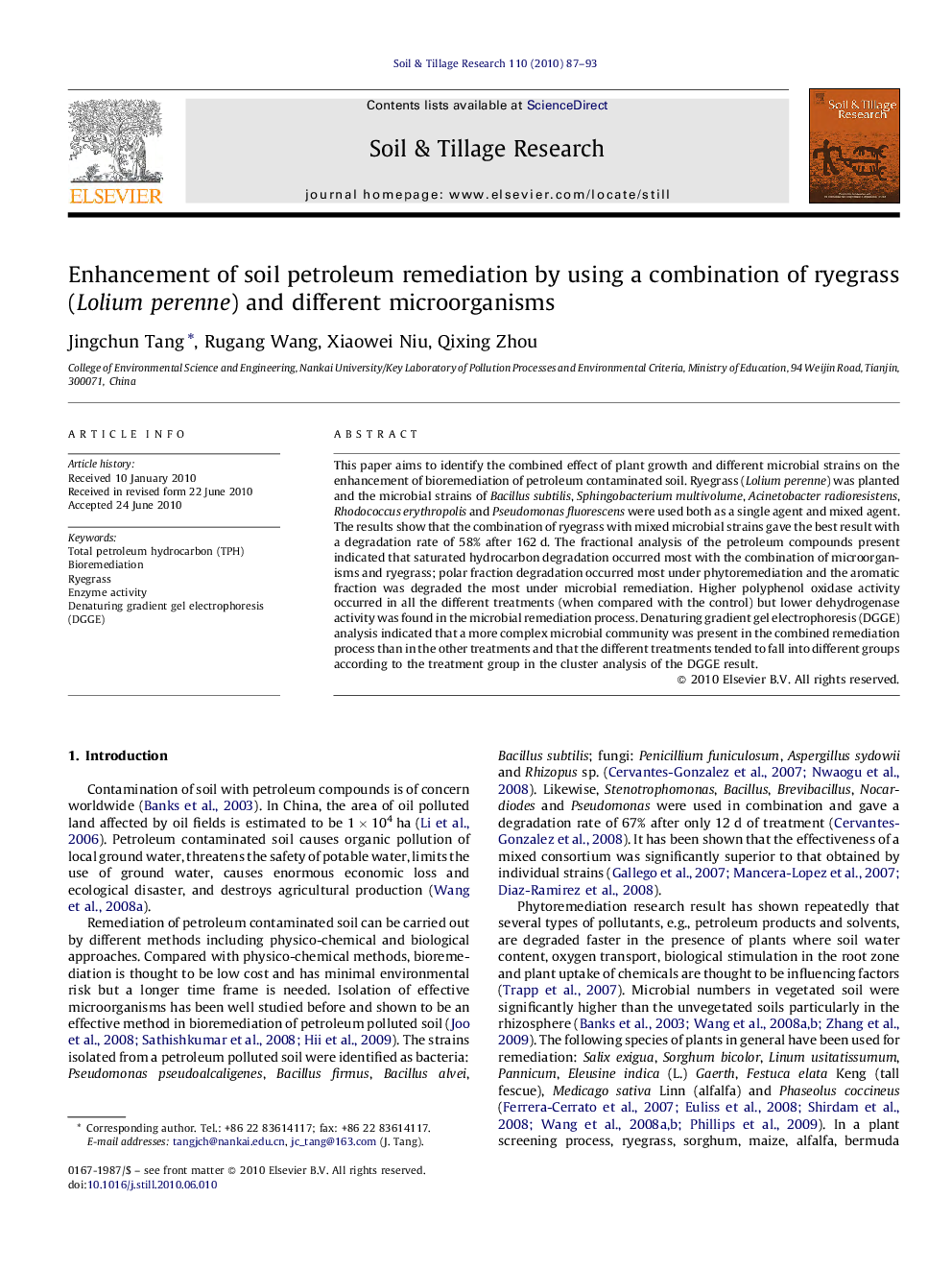| Article ID | Journal | Published Year | Pages | File Type |
|---|---|---|---|---|
| 306184 | Soil and Tillage Research | 2010 | 7 Pages |
This paper aims to identify the combined effect of plant growth and different microbial strains on the enhancement of bioremediation of petroleum contaminated soil. Ryegrass (Lolium perenne) was planted and the microbial strains of Bacillus subtilis, Sphingobacterium multivolume, Acinetobacter radioresistens, Rhodococcus erythropolis and Pseudomonas fluorescens were used both as a single agent and mixed agent. The results show that the combination of ryegrass with mixed microbial strains gave the best result with a degradation rate of 58% after 162 d. The fractional analysis of the petroleum compounds present indicated that saturated hydrocarbon degradation occurred most with the combination of microorganisms and ryegrass; polar fraction degradation occurred most under phytoremediation and the aromatic fraction was degraded the most under microbial remediation. Higher polyphenol oxidase activity occurred in all the different treatments (when compared with the control) but lower dehydrogenase activity was found in the microbial remediation process. Denaturing gradient gel electrophoresis (DGGE) analysis indicated that a more complex microbial community was present in the combined remediation process than in the other treatments and that the different treatments tended to fall into different groups according to the treatment group in the cluster analysis of the DGGE result.
